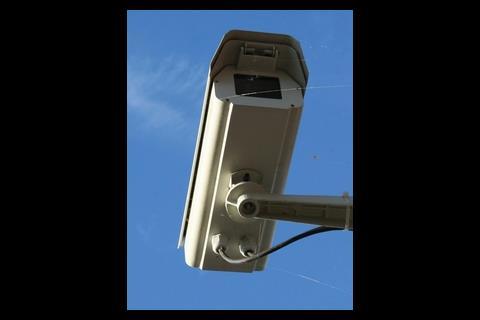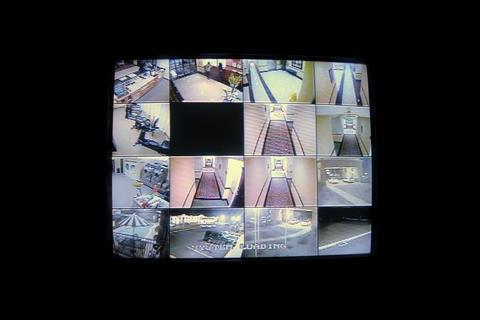This month, Davis Langdon looks at the advantages and disadvantages of internet protocol CCTV systems compared with their analogue counterparts
With ever-rising levels of crime and antisocial behaviour and increasing threats of terrorism, the security of buildings is essential in their protection and continued operation.
A key element of a security strategy for the protection of non-domestic premises is the use of closed circuit TV systems (CCTV). Systems to date have traditionally been based on analogue devices and transmission, with cameras connected via co-axial cable. However, the latest systems, referred to as IP CCTV, use digital technology communicating over some form of internet protocol network.
Internet Protocol (IP) is a network protocol which is used on Local Area Network’s (LAN’s), Wide Area Network’s (WAN’s) and the internet. It comprises a suite of protocols which is layered, with a link layer, network layer, transport layer and application layer. Each layer plays a part in sending and receiving raw data using specific network hardware and transferring and routing information in a reliable format.
The benefit that a layered protocol provides is that with a new network application or hardware device, a protocol only needs to be created for that application or piece of hardware.
The key issues
•&�Բ�����; System integration
The demand for IP is being partly driven by end users who wish to integrate all security applications into a single system, running over the same network. The benefits of IP apply equally to these other technologies and so in organisations where there is an existing LAN or WAN that carries other communications traffic, a sound business case can be made to adopt this approach.
•&�Բ�����; Product development/availability
Compared to the analogue and digital markets, the current market for IP CCTV is relatively small, and this is subsequently reflected in the limited product ranges available and the corresponding pricing levels. As a consequence, the use of this technology tend to be cost effective only on larger projects.
The CCTV industry is largely price driven, and its increasing affordability through product development and innovation will determine the success of this technology.
•&�Բ�����; Upgrade/replacement of existing systems
Existing analogue systems and their associated cabling networks represent a significant investment, so rather than see a wholesale replacement of existing systems, the industry is likely to see the growth of hybrid networks that link analogue systems to IP networks. These offer the functional benefits of IP without the need for substantial capital investment.
Analogue cameras can be interfaced with digital recorders using existing cabling, allowing the transmission of images over an existing IP network. New IP CCTV systems are likely to be considered where existing LANs can be utilised. Ultimately, it is expected that analogue networks will be replaced with LAN communications when system upgrades are required.
•&�Բ�����; Network availability
The success of an IP CCTV system depends on the ability of the network to guarantee the timely, fast and affordable delivery of high volume, accurate images. Higher capacity and faster LANs are now becoming available at a reasonable cost, which means the threat of their being overloaded with CCTV image traffic is greatly reduced.
Furthermore, the bandwidth requirements for CCTV are decreasing, due partly to improvements in compression technologies and partly to the implementation of traffic management techniques, both of which reduce the impact on LAN systems. A further advancement is the use of wireless LANs, which allow a cable-free means of connecting devices over IP. These are widely used in commercial applications and are starting to be adopted for CCTV applications.
Designing an IP system
Designing an IP CCTV system is fundamentally a simple process, requiring the following steps:
•&�Բ�����; Decide on the number and type of cameras required;
•&�Բ�����; Decide what video quality for viewing and recording is required;
•&�Բ�����; Decide how many days storage is required;
•&�Բ�����; Decide how the system is to monitored, managed and administrated.
Using these basic principles will determine the combination of IP addressable and IP interfaced analogue cameras; how much bandwidth is required; how much recording storage is required and finally, how many control points are required.
Conclusion
IP is having a significant effect on the CCTV industry, both in terms of product development and innovation and the shift in skill sets required by the contractors installing such systems. The market is growing steadily but is largely restricted to end users who can afford, and can see the immediate benefits of, the system. It will develop as costs are driven down by greater product choice and availability, and existing analogue systems start to require major upgrade and replacement.
Cost comparison
The table below provides a typical cost comparison between an IP addressable system and a digital recorder-based analogue system for a sports stadium in the south of England.
The site area is approximately 200,000 m2 and the stadium is circular with four segregated stands encompassing the playing field. There are eight independent levels in each of the four stands to enable access to seating areas, and each includes bars and restaurants/eateries.
The requirement is for internal refit of each stand including match day control room and externals. The CCTV specification for this scheme is as follows:
•&�Բ�����; total of 64 cameras located in and around the stadium
•&�Բ�����; 32 fully functional high speed dome cameras
•&�Բ�����; 10 installed on towers monitoring the perimeter
•&�Բ�����; 22 installed on walls or ceilings
•&�Բ�����; 32 static high resolution camera
•&�Բ�����; Three match day command and control stations (police, security, health and safety)
•&�Բ�����; Three non-match monitoring stations
•&�Բ�����; Digital recording
•&�Բ�����; Remote site monitoring out of hours
Downloads
Typical IP video network configuration
Other, Size 0 kbTable 1: Advantages of IP CCTV systems compared to analogue systems
Other, Size 0 kbTable 2: Cost comparison of IP and analogue CCTV systems in a sports stadium project
Other, Size 0 kb
Source
��ɫ����TV Sustainable Design
Postscript
Davis Langdon Mott Green Wall would like to thank MR Security for its assistance in preparing this article.






















No comments yet